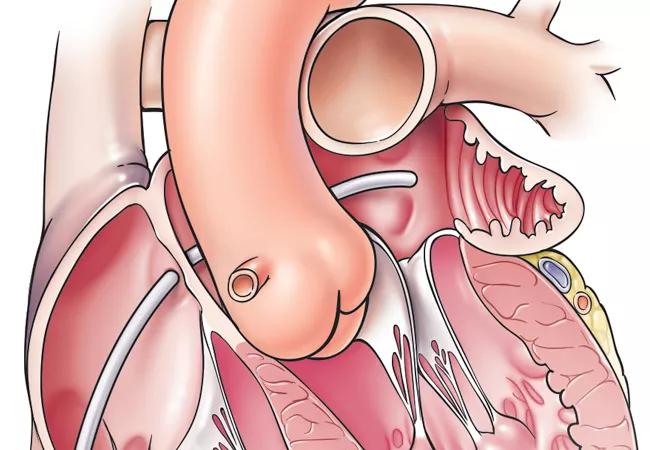May eliminate appropriate candidates

The recent proposal from the Centers for Medicare & Medicaid Services (CMS) to severely limit reimbursement for left atrial appendage closure with the WATCHMAN™ device needs to be rethought despite having some valid recommendations, says cardiologist Oussama Wazni, MD.
Cleveland Clinic is a non-profit academic medical center. Advertising on our site helps support our mission. We do not endorse non-Cleveland Clinic products or services. Policy
“They are doing the right thing to ensure the device is not abused or misused, but their proposal is too restrictive,” notes Dr. Wazni, Co-Director of the Ventricular Arrhythmia Center and Director of Outpatient Electrophysiology at Cleveland Clinic.
Dr. Wazni and his Cleveland Clinic colleague, Walid Saliba, MD, have been instrumental in conducting clinical trials that led to the FDA’s March 2015 approval of the device, which is designed to prevent stroke in patients with nonvalvular atrial fibrillation. Their thoughts, concerns and recommendations were expressed in a response recently delivered to CMS by the Heart Rhythm Society during the public comment period on the CMS proposal . The Society for Cardiovascular Angiography and Interventions (SCAI) and American College of Cardiology (ACC) also responded.
CMS has proposed that patients meet three requirements in order to qualify for reimbursement for WATCHMAN: (1) a high CHADS2 or CHA2DS2-VASc score, (2) a high HAS-BLED score and (3) a contraindication to warfarin. Dr. Wazni notes this will eliminate an important segment of the population who could benefit from the device.
“Take a patient with a high CHA2DS2-VASc score who had an intracranial bleed on warfarin,” he says. “This patient has a long-term contraindication to warfarin but a low HAS-BLED score of 1. We’d like to see CHA2DS2-VASc score as the primary driving factor, and either a high HAS-BLED score or a contraindication to anticoagulants as the second condition.”
Dr. Wazni feels that CMS’ request that WATCHMAN patients be tracked through a registry is appropriate, since how the device compares with warfarin therapy over the long term is unknown. “At the end of five years, we can calculate the risk of stroke and compare it with historical information on warfarin,” he says.
He adds, however, that the need to operate two registries — one for patients on WATCHMAN and one for patients on anticoagulation — puts an onerous burden on hospitals and health systems. “Registries are expensive to start and maintain,” he says.
Cleveland Clinic cardiologists have implanted a large volume of WATCHMAN devices in high-risk patients and are following them closely. They hope CMS takes the thoughts of the experts in the Heart Rhythm Society, SCAI and ACC into careful consideration.

Further acute testing not needed if ECG and high-sensitivity troponin are negative

Scott Cameron, MD, PhD, also brings wide-ranging research interests to bear

Pioneering U.K. vascular surgeon joins Cleveland Clinic

AHA statement is first comprehensive document on perioperative stroke reduction

Recognition reflects prioritization of long-term patient outcomes

Recommendations help distinguish exercise-induced remodeling from pathology

JACC review highlights factors unique to women, ways to tailor management

Pushing the envelope in ablation of atrial fibrillation, ventricular tachycardia